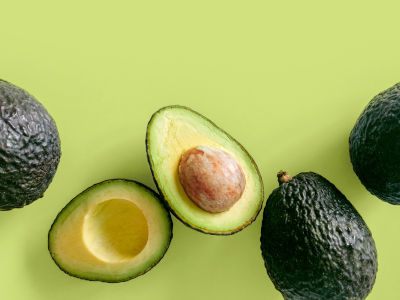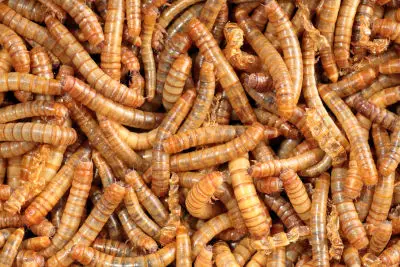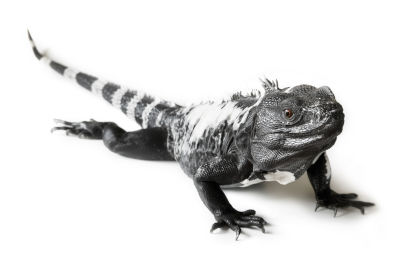7 Best Small Pet Iguana Species (With Pictures)
Are you looking for a pocket-sized Iguana that you can car for (Click here for my best UV bulb for small Iguana’s on Amazon)? Unfortunately, Iguana’s are typically quite big. However, there are some exceptions to this, which I will break down for you in this article.
What is the smallest pet Iguana? The Spiny Tailed Iguana is the smallest from as small as 5 inches. It is part of the Ctenosaurs genus and is known for its record breaking sprinting speeds at over 20 miles per hour.
| Are these foods dangerous for your Beardie? | |
| Avacado? Click here to learn, from this guide, if this food is dangerous |  |
| Superworms? Click here to learn, from this guide, if this food is dangerous |  |
This is one of a few different small Iguanas. In this article I will list 7 of the best small Iguanas. However when I say small, they are smaller than the average Iguana, but some are still regarded as large lizards in general.
Charlie my Cuban Rock Iguana(2 years old)and me.Yes,I'm wearing a head band. pic.twitter.com/k19WdMfyC9
— William Regal (@RealKingRegal) November 27, 2013
Can you really keep iguana as a pet?
Iguanas are typically quite large lizards and for that reason it is advised that they are only kept by advanced lizard keepers. They require some specialist requirements and a lot of space.
There are over 30 different species of iguana, and the majority of them are less than 4 feet in length, this is nose to tail end. but in all honesty they are still regarded as large lizards.
There are some that you can find that are between 1 and 3 feet long, that are more practical for people that have got limited space in the house. For example, the desert iguana, which grows up to18 inches in length, but I will explain this in more detail detail later on in the article.
Another example of a small Iguana is the club tailed iguana ,which is up to 12 inches in length. This size is ideal for domestic life.
The thing to understand with these Iguanas, as there is so many different species to consider, they all have very different temperaments, requirements for food, water, heating and lighting. Therefore, every individual specie needs to be understood thoroughly before taking on the responsibility of keeping them.
Failure to fully understand their individual requirements can result in the untimely demise of your lizard. Or at the least, your lizard living a very unhappy, unhealthy life.
It is advisable, if possible, to speak directly with someone who has had experience of keeping these lizards for a long period of time. To get some special tips that you might never get from reading a book or scanning a website article.
Types of small Iguanas that you can Consider
In this section I’m going to list some Iguanas that you can consider keeping. I will list a range of species, but ultimately I am targeting those species of iguana that are smaller in size. The ones that are more realistic to be kept in captivity.
01. The desert iguana
Getting too close to a desert iguana will make it run away incredibly fast, but sometimes one will stick around and try to look tough by opening its mouth a bit. pic.twitter.com/IXbPKXUII8
— Bryan D. Hughes (@rattlesnakeguy) December 22, 2017
This Iguana comes from the natural dry lands of America. Its main habitat is hot deserts, therefore it requires a very hot environment to keep it happy and close to its natural environment.
Size wise you can expect them to grow up to 16 inches in length, but the majority of this length is taken up but they’re really long tails.
One of their unique attributes is their camouflage, to match the natural desert environment. The colours you can usually expect them to be in is anywhere from a tan colour to a whiteish colour.
They also have the ability to change colour, depending on the time of day. When the sun is rising in the day they will have a greyish colour. But by 12PM, when the sun rises their skin will change colour to a warm white colour to reflect the sun and keep them safe from the hot weather conditions.
They also have the ability to run really fast, when under attack or in pursuit. They can reach really fast speeds and also while they are running, they have the ability to raise their front legs and run almost in a standing posture.
02. The rhinoceros iguana
Rhinoceros iguana @BristolZooGdns #iguana #lizard pic.twitter.com/itiiumxupM
— Brian Lilly (@brglilly) December 13, 2018
They’ve earned their name from the horns that are on their head which, as you can imagine, resemble Rhinos. So it’s quite an obvious reason why they been called this.
Their natural habitat is in the Caribbean and they prefer to be positioned in a Rocky terrain. Size-wise you can expect him to be anywhere from 25 to 60 inches. They also have a few different colour ranges such as green to dark green or even a greyish colour.
The males are differentiated by their larger horns which is quite obvious when you see them side by side. Their main diet includes fruits flowers and vegetables.
They also have some pores in their thighs which secretes pheromones, which the males use to attract females.
Typically they are not really an aggressive type of animal. However, if they are backed into a corner they will defend themselves. One of their favourite attacks is using their tail as a whip.
These lizards are protected in the wild but are still kept in captivity at pets. They are kept by professional lizard keepers or zoos. However they are available on the open market, but more targeted to an advance keeper.
03. Angel Island Chuckwalla Lizard
The Angel Island Chuckwalla Lizard is typically up to 17 inches in length. It’s natural habitat is in the Gulfs of California. It was originally introduced to the Angel Island, for food purposes, but since then it made it it’s natural home. Hence the name.
Behaviour wise it is quite a docile and laid-back animal. In fact one of the most laid back in this lizard family. It is also known for doing weird dances, which are believed to be linked to a number of different reasons. One of these weird activities is head bobbing, which is believed to be linked to communication with other lizards.
They have an ability to inflate their lungs and stretch out their skin. So that they can wedge and fit themselves into rock faces. This bizarre behaviour causes its skin to look quite saggy and stretched like an old balloon.
04. The spiny tailed iguana

The Spiny tailed Iguana (Click here to see the typical costs of an Iguana) originates from Mexico or Central America. Its scientific genus name is Ctenosaurs. It ranges from five up to 39 inches in length.
The small Yucatan spiny tailed lizard is a small specie of this Genus. It can grow up to 10 inches in length, which is more of an ideal size to be considered for captivity.
They also have very fast running capabilities. In fact they hold the world record for lizards, running over 20 miles per hour, which is quite impressive.
Unfortunately they are an endangered specie due hunting and a collection of unfortunate reasons, which has severely reduced their numbers. In the wild there are laws to protect them, however, they are still endangered.
They have a varied diet, mostly eating fruits, vegetables and leaves.
05. The Fiji crested iguana
Fiji Crested Iguana (Brachylophus vitiensis)@kulaecopark #EndangeredSpeciesDay #Brachylophusvitiensis #KulaEcoPark pic.twitter.com/eJZ1P7KYUM
— St ✧ Ave ✧ N (@Semioptera) May 20, 2016
It’s scientific name is Brachylophus vitiensis and unfortunately this is also one of the critically endangered species. Unfortunately its numbers are really low and continue to reduce.
They tend to be found in the dry Forest areas in an island in the northwestern region of Fiji.
It is called the crested gecko because of an obvious crest on its back. It grows up to 30 inches in length, which is from its tail end to its nose. And typically weighs up to 300g in weight.
It is a herbivore therefore it likes to eat fruits vegetables and leaves. For reproduction, eggs are laid instead of live young. and breeding time is often in March.
06. Turks and Caicos Rock Iguana
In this section I’m going to talk to you about the Turks and Caicos rock lizard. This lizard is endangered due to its habitat being overgrazed and trampled on, reducing their food intake.
They are relatively small lizards, growing up to 12 inches in length. Making them one of the smallest species in this Cyclura type.
They are also egg layers and tend to lay eggs in large groups of up to 9 eggs. The male and female are easily differentiated between each other, because the male is bigger than the female. And is quite considerable difference so it is quite obvious to see this.
07. The Cuban rock iguana
The Cuban rock iguana has the scientific name of Cyclura nubila. Tt is also known as the Cuban ground iguana also simply as the Cuban iguana. It has red eyes, which are quite striking, and almost evil when you look at them.
With these red eyes they have amazing vision. With the ability to see moving objects over long distances. Maybe this is why they have such piercing red eyes?
So, even though it has these scary looking red eyes, it is actually a herbivore. Therefore, the majority of his diet is fruits vegetables, leaves and vegetation. Therefore it is not really anything to be frightened of as it is not really hunting for meat. As for the size of this lizard it is 16 inches in length.
Related Questions:
Are Iguanas aggressive? As discussed in this article, there are quite a variety of different Iguanas, with varying temperaments. In general they are quite territorial. They will protect their territory and will bit if they feel under threat.
Do Iguana Bites Hurt? Yes, they will hurt. Although Iguanas are mostly not meat eaters, their teeth are designed to tear apart plant material and they have strong jaws. Therefore they can inflict some painful damage.
Do Iguana’s have a third eye? Yes, but not in a literal sense. This “third eye” as its called is really what is known as the “Parietal Eye”. It has the ability to detect fluctuations in the light, from light to dark. It is not like a real eye, meaning they cannot see people with it.